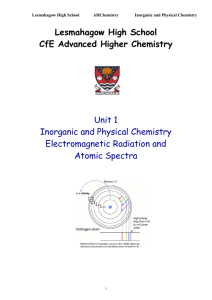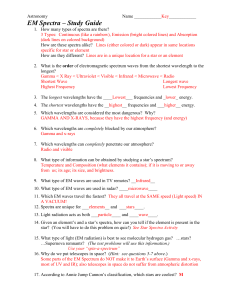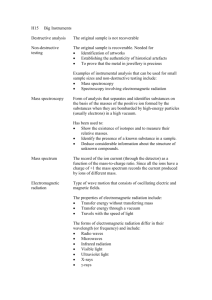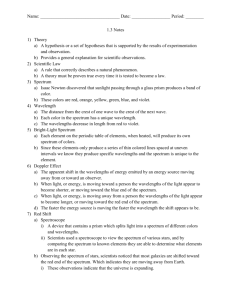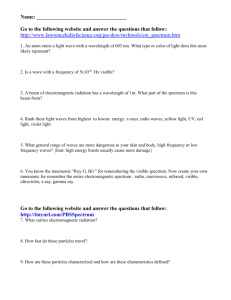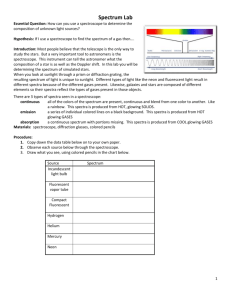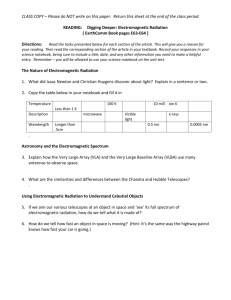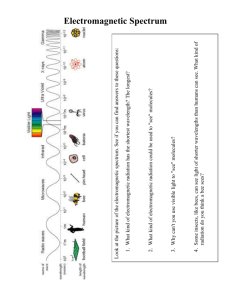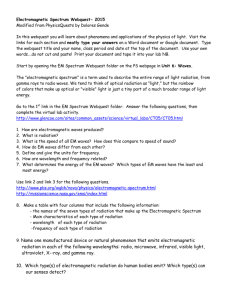Name Date Hour ______ Spectroscopy of Atoms Learning Goals: I
advertisement
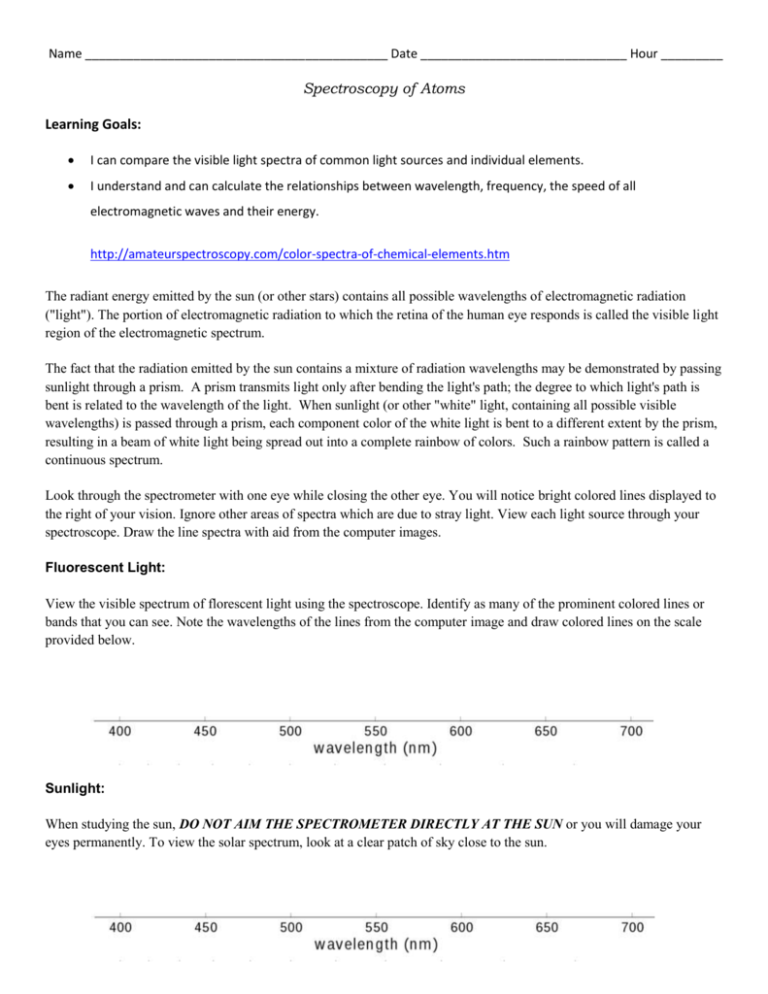
Name ____________________________________________ Date ______________________________ Hour _________ Spectroscopy of Atoms Learning Goals: I can compare the visible light spectra of common light sources and individual elements. I understand and can calculate the relationships between wavelength, frequency, the speed of all electromagnetic waves and their energy. http://amateurspectroscopy.com/color-spectra-of-chemical-elements.htm The radiant energy emitted by the sun (or other stars) contains all possible wavelengths of electromagnetic radiation ("light"). The portion of electromagnetic radiation to which the retina of the human eye responds is called the visible light region of the electromagnetic spectrum. The fact that the radiation emitted by the sun contains a mixture of radiation wavelengths may be demonstrated by passing sunlight through a prism. A prism transmits light only after bending the light's path; the degree to which light's path is bent is related to the wavelength of the light. When sunlight (or other "white" light, containing all possible visible wavelengths) is passed through a prism, each component color of the white light is bent to a different extent by the prism, resulting in a beam of white light being spread out into a complete rainbow of colors. Such a rainbow pattern is called a continuous spectrum. Look through the spectrometer with one eye while closing the other eye. You will notice bright colored lines displayed to the right of your vision. Ignore other areas of spectra which are due to stray light. View each light source through your spectroscope. Draw the line spectra with aid from the computer images. Fluorescent Light: View the visible spectrum of florescent light using the spectroscope. Identify as many of the prominent colored lines or bands that you can see. Note the wavelengths of the lines from the computer image and draw colored lines on the scale provided below. Sunlight: When studying the sun, DO NOT AIM THE SPECTROMETER DIRECTLY AT THE SUN or you will damage your eyes permanently. To view the solar spectrum, look at a clear patch of sky close to the sun. Hydrogen: Helium: Neon: Argon: Mercury:
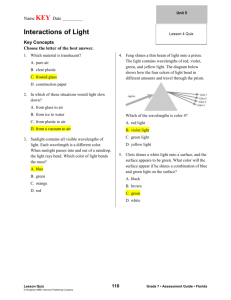
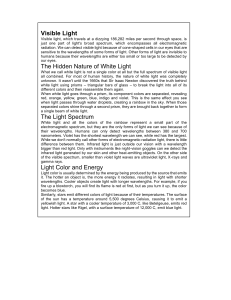
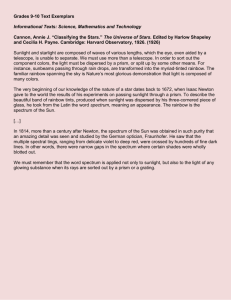
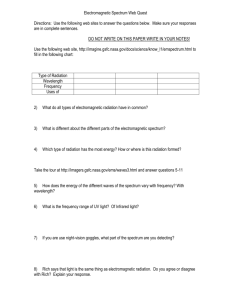
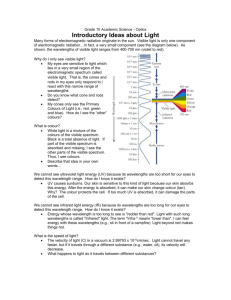
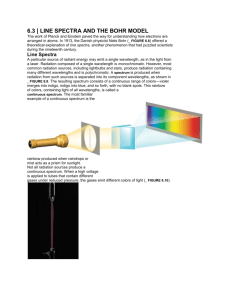
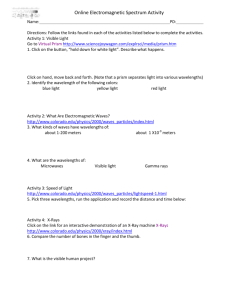

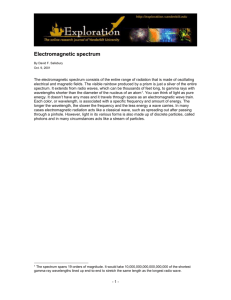

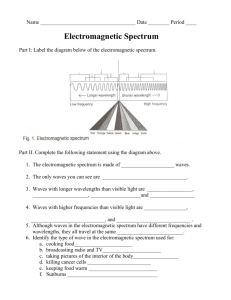
![[1] The "electromagnetic spectrum"](http://s3.studylib.net/store/data/006845857_1-82127c55c362b352c5f29bfd4bc58761-300x300.png)
